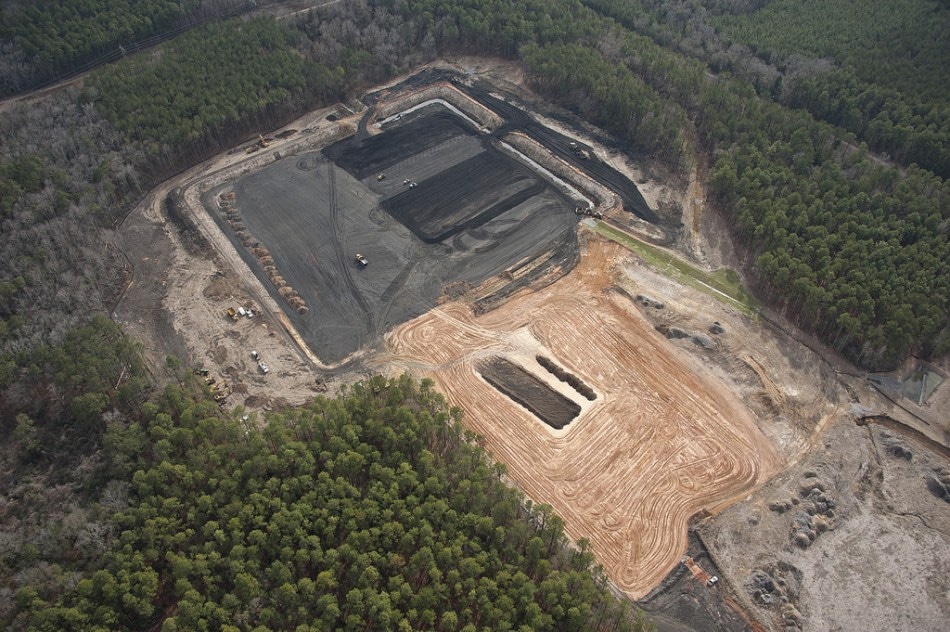Aug 16 2018
Contamination of groundwater has become a widespread environmental problem. Although long-term monitoring has typically become the most important course of action, scientists are clueless about the most cost-effective method for tracking the behaviors of contaminant plumes.
 An aerial view of cleanup efforts at the Savannah River Site. (Image credit: Savannah River Site)
An aerial view of cleanup efforts at the Savannah River Site. (Image credit: Savannah River Site)
For instance, when the contaminant plumes are complex, massive, and long-term? Or how a sudden event like a storm could cause abrupt changes in contaminant levels which may be overlooked by periodic sampling?
Researchers at the Department of Energy’s Lawrence Berkeley National Laboratory (Berkeley Lab) and Savannah River National Laboratory have come with a low-cost technique, in which commonly available sensors are used for monitoring the pollutants in real time. Their study titled, “In Situ Monitoring of Groundwater Contamination Using the Kalman Filter,” was recently published in the journal, Environmental Science & Technology.
“Conventional methods of monitoring involve taking water samples every year or every quarter and analyzing them in the lab,” stated Haruko Wainwright, a Berkeley Lab researcher who headed the study. “If there are anomalies or an extreme event, you could miss the changes that might increase contaminant concentrations or potential health risk. Our methodology allows continuous monitoring in situ using proxy measurements, so we can track plume movement in real time.”
“Analysis of the autonomous in situ data can be rapidly analyzed remotely using machine learning methods,” she added. “It can act as an early warning system – we can detect sudden changes in contaminant levels. These changes may indicate a need for more or less intervention in terms of the remediation strategy, ideally leading to improved as well as more cost-effective cleanup.”
In the past few years, environmental monitoring has become more vital as remediation approaches have been moving away from soil removal and intensive groundwater treatment. “Intensive cleanup has a lot of negative environmental impacts, including air pollution, large energy-water use, and waste production,” said Wainwright. “So experts have started thinking about a paradigm shift from this very intensive remediation to a more sustainable remediation, or ‘green remediation,’ so we don’t just think at the contaminant level but we think about the net environmental impact.”
Conversely, for large contaminations, long-term monitoring could prove expensive over time. Moreover, present long-term monitoring strategies do not account for how gradual or abrupt changes in weather, for example heavy rain events, might affect plume behaviors. This aspect is especially crucial when considering persistent plumes, like those related to radionuclide or metal contamination.
The latest method begins with sensors to monitor water quality variables that have been established to be dependable indicators of contaminant levels. For the purposes of this analysis, the team observed the levels of uranium-238 and tritium in the groundwater at a former nuclear weapons production site in South Carolina - the Savannah River Site - which is managed by the DOE.
For this particular site, the researchers determined the pH or acidity levels and specific conductance, which is a measure of electrical conductance, and eventually found these variables to be reliable indicators for uranium-238 and tritium concentrations. The data obtained from the multiple sensors were subsequently fed into a Kalman filter so as to estimate the concentrations of the contaminant. A Kalman filter is a mathematical algorithm, not a physical filter. It makes estimates by integrating mixed time-series data and is often utilized in many different fields, for example, remote sensing and traffic prediction.
The researchers used historical data from the Savannah River Site and discovered that their method offered reliable information about plume behavior over the last two decades, suggesting that the novel method indeed holds considerable potential as a long-term monitoring method for quickly assessing the plume stability of a contaminant. Another benefit over traditional methods is that it is capable of reducing the frequency of manual sampling of groundwater and subsequent lab analysis, and thus lowers the monitoring cost.
According to Wainwright, an expert in environmental data analytics and groundwater contamination, this latest method can be applied to both underground and surface water. It could even be used for tracking radionuclide, other metals, and organic compounds that are typically present in groundwater, such as fuels, chromium, and arsenic.
“There are so many different types of sensors available now, and sensor networking and rapid statistical analysis is straightforward,” she said. “We can put together all types of in situ sensors and estimate the target contaminant concentration using this framework for data integration in real-time.”
She added: “Improved monitoring techniques are essential to protect public health and the ecology. People feel safe if it’s properly monitored. Our technique is a way to monitor such sustainable remediation – effectively and cheaply.”
The DOE’s Office of Environmental Management and Office of Science funded the study. The other study co-authors are Franziska Schmidt of UC Berkeley, Boris Faybishenko of Berkeley Lab, Miles Denham of Panoramic Environmental Consulting, and Carol Eddy-Dilek of Savannah River National Laboratory. The advances build upon the ideas devised through the Office of Science’s Watershed Scientific Focus Area project.
Source: Berkeley Lab